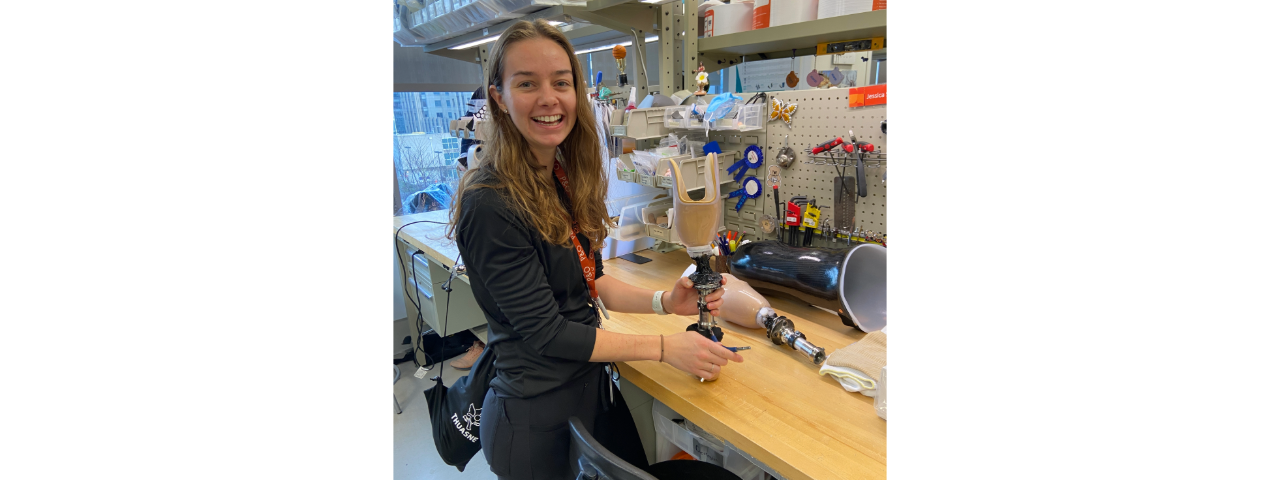Weakness can lead to prolonged functional impairments
Body
- Approximately 80% of COVID-19 patients who survive critical care experience diaphragm muscle weakness
- Findings suggest that weakness of the breathing muscle is a highly prevalent underlying cause for prolonged functional impairments after hospitalization for COVID
- Research shines light on the possibility that COVID is uniquely damaging to muscle tissues, including the diaphragm
CHICAGO, July 14, 2021 — The substantial burden of long-term disability for survivors of severe COVID-19 is increasingly clear, with patients frequently reporting persistent shortness of breath, cough and fatigue post-hospitalization. Now, for the first time, a team of scientists utilizing neuromuscular ultrasound has discovered the high prevalence of structural and functional alterations to the diaphragm muscle in this patient population.
“In our COVID Care Unit at Shirley Ryan AbilityLab, we have observed severe muscle limb weakness and functional limitations, including fatigue and shortness of breath, among patients undergoing inpatient rehabilitation,” said study corresponding author Colin Franz, a physician-scientist at Shirley Ryan AbilityLab and an assistant professor at Northwestern University’s Feinberg School of Medicine. “In the medical community, there is an assumption that shortness of breath is the result of lung damage following COVID pneumonia. However, based on our previous research, we hypothesized that diaphragm weakness may in fact be a large contributor, and that the diaphragm is negatively affected following severe COVID just as other muscles in the body are.”
In a cohort of 21 COVID-19 survivors admitted to Shirley Ryan AbilityLab for inpatient rehabilitation, 76 percent showed at least one abnormality of diaphragm muscle structure or function via ultrasound. Additionally, 67 percent of subjects experienced impairments related to their diaphragm’s ability to contract and inflate the lungs, and 18 percent had experienced diaphragm muscle atrophy. These findings suggest neuromuscular respiratory dysfunction is a highly prevalent underlying cause for prolonged functional impairments after hospitalization for COVID-19.
Researchers compared this patient population to non-COVID medically complex patients — many of whom had other infections and/or cancer diagnoses. Although this control group also spent time in the intensive care unit (ICU) and on ventilators prior to coming to inpatient rehabilitation, patients experienced significantly less diaphragm muscle dysfunction.
“Our findings suggest that COVID is uniquely damaging to muscle tissues, including the diaphragm,” said Dr. Franz, who has also identified permanent nerve damage in COVID-19 patients who have been on ventilators.
Body
Substantial weakness in the diaphragm muscles is likely to make recovery slower as it represents an acquired neuromuscular respiratory disease. However, the study co-authors’ early research looking at the benefits of physical rehabilitation shows that these patients are able to make gains through targeted interventions focused on optimizing chest wall mobility, neuromuscular “re-education” and strengthening activities.
This study offers insights to those who have survived severe bouts of COVID-19 and are still wrestling with ongoing symptoms.
“Survivors who are experiencing persistent difficult or labored breathing, fatigue, poor sleep, brain fog or other concerning symptoms should consult with their physicians,” said Ellen Farr, MD, who performed the research while a medical resident at Shirley Ryan AbilityLab and Northwestern University. “Additionally, patients who wake up frequently through the night or who experience headaches in the morning should do the same, as it’s possible they’re not getting enough oxygenation when they lie flat, another telltale sign of diaphragm weakness.”
In addition to following patients post-hospitalization to see how rehabilitation protocols help them recover, in the future the researchers also will investigate whether those affected by mild COVID-19 experience similar diaphragm weakness that can be attributed to the virus itself (vs. prolonged time in the ICU and mechanical ventilation).
“As physicians, we are transitioning from treating COVID as an acute critical illness to a long-term condition,” said Lisa Wolfe, MD, co-author, professor of Medicine and Neurology at Northwestern University’s Feinberg School of Medicine, and medical director of Respiratory Care at Shirley Ryan AbilityLab. “The diaphragm plays a key role in preserving stamina and is even important for ensuring a good night’s sleep. These data enhance our understanding of the possible causes of long-term symptoms among COVID survivors.”
The study, “Diaphragm Dysfunction in Severe COVID-19 as Determined by Neuromuscular Ultrasound” was first published online in Annals of Clinical and Translational Neurology in July 2021.

